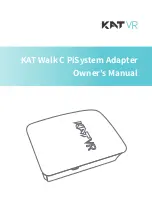
20
IEEE
Institute of Electrical and Electronics Engineers Infrastructure An integrated
wireless and wired LAN is called an Infrastructure configuration.
Infrastructure is applicable to enterprise scale for wireless access to central
database, or wireless application for mobile workers.
ISM Band
The FCC and their counterparts outside of the U.S. have set aside bandwidth
for unlicensed use in the so-called ISM (Industrial, Scientific and Medical)
band. Spectrum in the vicinity of 2.4 GHz, in particular, is being made
available worldwide. This presents a truly revolutionary opportunity to place
convenient high-speed wireless capabilities in the hands of users around the
globe.
Local Area Network (LAN)
A LAN is a group of computers, each equipped with the appropriate network
adapter card connected by cable/air, that share applications, data, and
peripherals. All connections are made via cable or wireless media, but a LAN
does not use telephone services. It typically spans a single building or
campus.
Network
A network is a system of computers that is connected. Data, files, and
messages can be transmitted over this network. Networks may be local or
wide area networks.
Protocol
A protocol is a standardized set of rules that specify how a conversation is
to take place, including the format, timing, sequencing and/ or error
checking.
SSID
A Network ID unique to a network. Only clients and Access Points that share
the same SSID are able to communicate with each other. This string is
case-sensitive.
Static IP Addressing
A method of assigning IP addresses to clients on the network. In networks
with Static IP address, the network administrator manually assigns an IP
address to each computer. Once a Static IP address is assigned, a computer
uses the same IP address every time it reboots and logs on to the network,
unless it is manually changed.
Temporal Key Integrity Protocol (TKIP)
The Temporal Key Integrity Protocol, pronounced tee-kip, is part of the IEEE
802.11i encryption standard for wireless LANs. TKIP is the next generation
of WEP, the Wired Equivalency Protocol, which is used to secure 802.11
wireless LANs. TKIP provides per-packet key mixing, a message integrity
check and a re-keying mechanism, thus fixing the flaws of WEP.
Transmission Control Protocol / Internet Protocol (TCP/IP)
TCP/IP is the protocol suite developed by the Advanced Research Projects
Agency (ARPA). It is widely used in corporate Internet works, because of its
superior design for WANs. TCP governs how packet is sequenced for
transmission the network. The term “TCP/IP” is often used generically to
refer to the entire suite of related protocols.




































